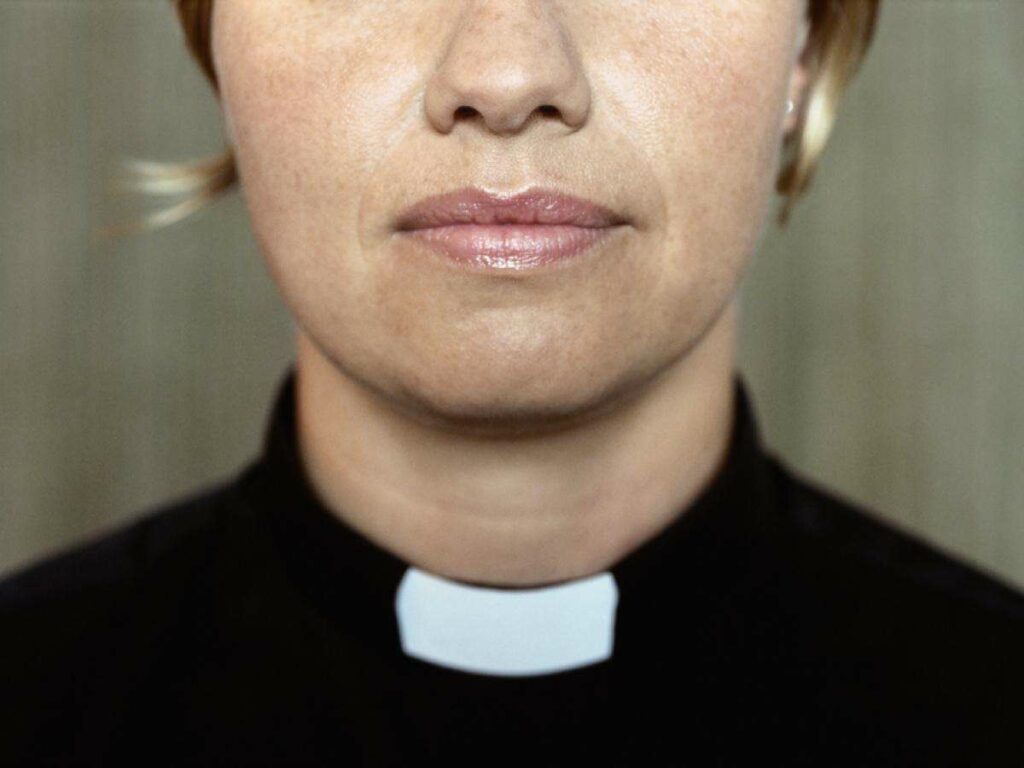It’s no secret that the SBC has been monkeying about with its theological foundations as of late, shrugging off the oppressive mantle of complementarianism in exchange for the more lightweight and flexible windbreaker of soft-complementarianism egalitarianism. This despite the fact that the Baptist Faith and Message (BFM) is definitive on the issue: “While both men and women are gifted for service in the church, the office of pastor is limited to men as qualified by Scripture.”
To catalog the downgrade of the SBC, we directed ourselves to Thom Rainer’s website where he lists the SBC 500, a compendium of the 500 largest Southern Baptist Churches in the United States by membership size (or in this case, 494) ranging from the 1,092 congregants at Calvary Baptist Church in Dothan, AL all the way to the 31,215 reported by Newspring Community Church in Anderson, SC.
The SBC 500 is the brainchild of Micah Fries, the former Vice President of LifeWay Research, who states, “The idea behind it is to try to identify the 500 largest Churches across the denomination, and of course, mutual learning from within that community as well as then being able to extrapolate from that some of the best practices, trends, that sort of thing, research that will then bleed across the denomination and help influence churches towards growth and reaching men and women for Christ.”
Our concern at Pulpit & Pen is not the size of the church, but rather the number of churches that have “women pastors on staff” (hereafter known as “impastors” as there is no such thing as a woman pastor). The practice of having women in these roles is in direct violation of the scriptures and serves as more evidence that the SBC is heading downhill at breakneck speed.
For this reason, we surveyed every single one of these 494 churches to see how many of them have impastors in their employ. The findings are pretty shocking.
Of the 494 churches listed, we could only find staff information on 446 of them. Of the 446 churches that we had data for, 47 of them listed women as “Pastors” on their staff pages as their official designation.
This means 10% of the top 500 biggest Southern Baptist Churches in the world are directly standing in defiance to the BFM and are sinfully serving in opposition to the scriptures.
When you read through our methodology below, you’ll see that this is the lowest possible percentage. In reality, it’s probably closer to 20 or 25%.
Not only do 10% of these churches have formalized impastors in leadership, but another 91 churches have women on staff with the title of either “Minister” – such as “Women’s Minister,” “Youth Minister,” “Singles Minister” – or, to a lesser extent, “Ministry Director” or “Director of Women’s Ministries.” While some are serving in faithful, biblically appropriate roles (if with loftier-than-needed titles), many who function in their given roles are doing so with the same authority and positioning in the church as the elders and authority of a pastor, but without that specific title.
Combine the two groups and at least ONE-THIRD of the top 450 largest SBC churches in the country have women impastors or women “Ministers” employed on staff.
To hear apologists for the orthodoxy of the SBC tell it, however, there is no slide, there is no downgrade, and this is no problem. The SBC isn’t becoming more egalitarian, and you’re crazy if you think they are.
That’s the thing about these arch defenders of SBC devolution. They’ll slit the SBC’s throat and then complain about a nicked ear, while that number of impastors climbs and climbs and climbs.
Methodology:
- We visited the websites of these churches, found the staff pages, and used the posted information as our basis. We did not call the churches to confirm the veracity of the information listed online, which we assume to be correct and accurate. Unfortunately, not all churches had this information publicly accessible. Of the 494 churches listed, we could only find staff information on 448 of them. For 46 of them, either there was no ministry staff page of any kind, or the staff page simply listed a biography for the senior pastor and no one else.
- The lack of information was especially prevalent as we went through the final 20 largest churches. Most of these churches are multi-site and don’t list their staff, even though they have multi-million dollar staff budgets. Newspring, for example, has over 30,000 people across 14 campuses and yet only contains brief biographies on the 14 campus pastors, even though there are likely hundreds of staff members employed there. While I would wager many women impastors or ministers are employed, we did not include them in the list of 46.
- When examining the titles that are given to the staff members, we discovered no consensus on what the different roles and responsibilities should be called. As a result, their labels were quite varied (i.e. Ministry Associate, Ministry Assistant, Ministry Director, Director of the Ministry, Ministry Overseer, Women’s Minister, etc.) This makes it challenging to differentiate between a pastor and a minister, as some churches refer to their pastors as ministers, and others do not. In some churches, the ministry directors are pastors, but not in others. This gives them the coverage and pretense to do as they please. If a church listed all the men as ministers and a few women as ministers as well, we did not include them in the list, opting for a conservative estimate, even though the terms “minister” and “pastor” are being used interchangeably.
- Many churches are clearly playing games with the titles they give women, even if their role is the same as that of the men. It is not uncommon to see a staff page list fifteen different members on their church leadership page or pastoral staff page. You’ll have “Senior Pastor,” “Executive Pastor,” “Teaching Pastor,” “Assistant Pastor,” “Spiritual Formation Pastor,” “Youth Pastor” – all men – then, as soon as a woman is listed, the terminology switches to “Children’s Minister,” “Women’s Minister,” “Youth Ministry Director” – all women, who are effectively functioning in the role of pastors but under a different name. In terms of our methodology, we erred on the side of conservatism. If they listed a woman as “Youth Minister” on the pastoral staff page, we did not categorize her as a pastor as part of the 46.
- Here are a few examples of what is meant by :


- These women, called ministers, were not included as pastors in our list, which only included those whose churches specifically use the title of “Pastor” to define them.











